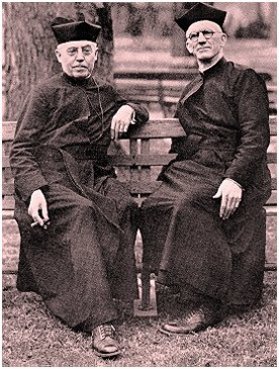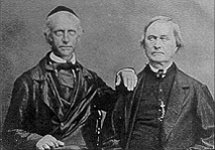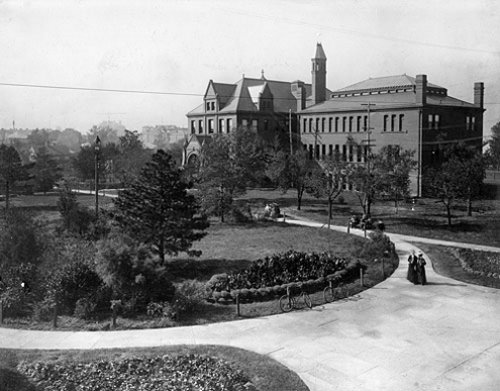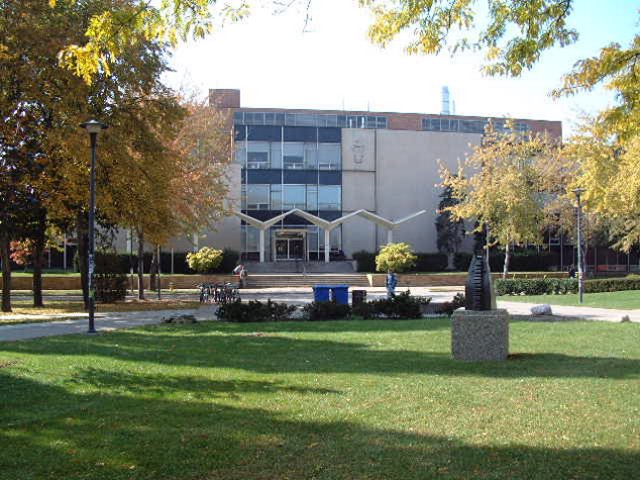A History of
The Jesuit order mandated the college with the task of
discovering why sin fails to diminish -- and often increases -- among youths
following their confirmation in Christ. Subjects (students) were in great
supply from the nearby towns of Penob Creek and Kitch Creek. Parents were
delighted that their young, wayward sons now had a last chance at a higher
education (and a little discipline) before being forced to commit their lads
to the seminary. In 1914, the Jesuits, itching to get in on the fun and
carnage of the Great War, placed the running of After the signing of the Versailles Treaty, the Jesuits
returned to Meanwhile, during the high-profile tussle waged on the grounds of the college, the rapidly expanding Penob Creek and the booming, industrialized Kitch Creek seized on the lack of attention on local politics and simultaneously tried to annex each other. A provincial mediator stepped in and got both mayors to agree to form a new town. Penobkitch Creek (voted the best suggested name in a local competition with Kitchpenob Creek running a close second) was incorporated in 1922.
During World War II, During the Deifenbaker years, Penobkitch's steadfast Tory vote gave it enough behind-the-scenes pull to win it the right to turn the college into a full-fledged university. It was decided to name Mercy College after Canada's most inconsequential prime minister, Arthur Meighan. The two-time Prime Minister's grand summer cottage was a well-known fixture in the community and the fish kills the Meighan family used to host are still fondly remembered by Penobkitch's senior residences. The new administration quickly abandoned the school's old motto and adopted the motto Consecratus Amore Fraterno (Dedicated to Brotherly Love) for Sir Arthur Meighan University (affectionately known as Meighan U). The curriculum was further broadened to include Biology, Chemistry, Engineering, Physics, Psychology, Sociology, Anthropology, English, and Philosophy. In the 1970s and early 1980s, Communication Studies, Political Science, Business, Education, Classical Civilizations, and various graduate programs, including Law, were added. Tax dollars poured into the area, roads were added, and a small airport was built. Greatness was predicted for the fledgling university. Penobkitch's citizens were easily deluded into believing their own publicity and that of the media, who will rarely not print something glowing if there is a free meal and nice hotel room involved. Unfortunately several factors conspired to keep the "Future McGill of Northern Ontario" (as described by a cub reporter unaccustomed to the lucre of his profession) obscure. Despite new roads and an airport making Penobkitch Creek easily accessible to the citizens of Toronto, Guelph, London, Waterloo and Kitchener, few of those citizens came to what seemed a dull, gritty industrial town. Furthermore, the shinning preeminence of those cities' established universities left Meighan in shadow.
Mercy College then and now. Sir Arthur Meighan University has been described by many as the ultimate living museum of '60s campus architecture. Since its investiture as a university, Meighan has consistently drawn the lowest number of first-year Ontario scholars. In a repeat of its days as Mercy College, Meighan U has become in the minds of students and parents a Last Chance U. Although Meighan U does not shine in the public realm, in academic circles it is known as a place where an intellectual can pursue his/her field of interest, no matter how esoteric, and get paid well for it. Its many departments, notably the Math department, are staffed by a number of men and women possessing a genius unrecognizable or socially unacceptable to university administrations concerned with sheer output. Since Meighan U's creation, it has had its moments of glory (owing to the odd genius of its professors and students) quickly followed by obscurity after a patent battle or court injunction. For this reason Linda Frum, in her authoritative guide to the universities of Canada, summed the school up best as "...the flying Dutchman of post-secondary education."
|
|
|



